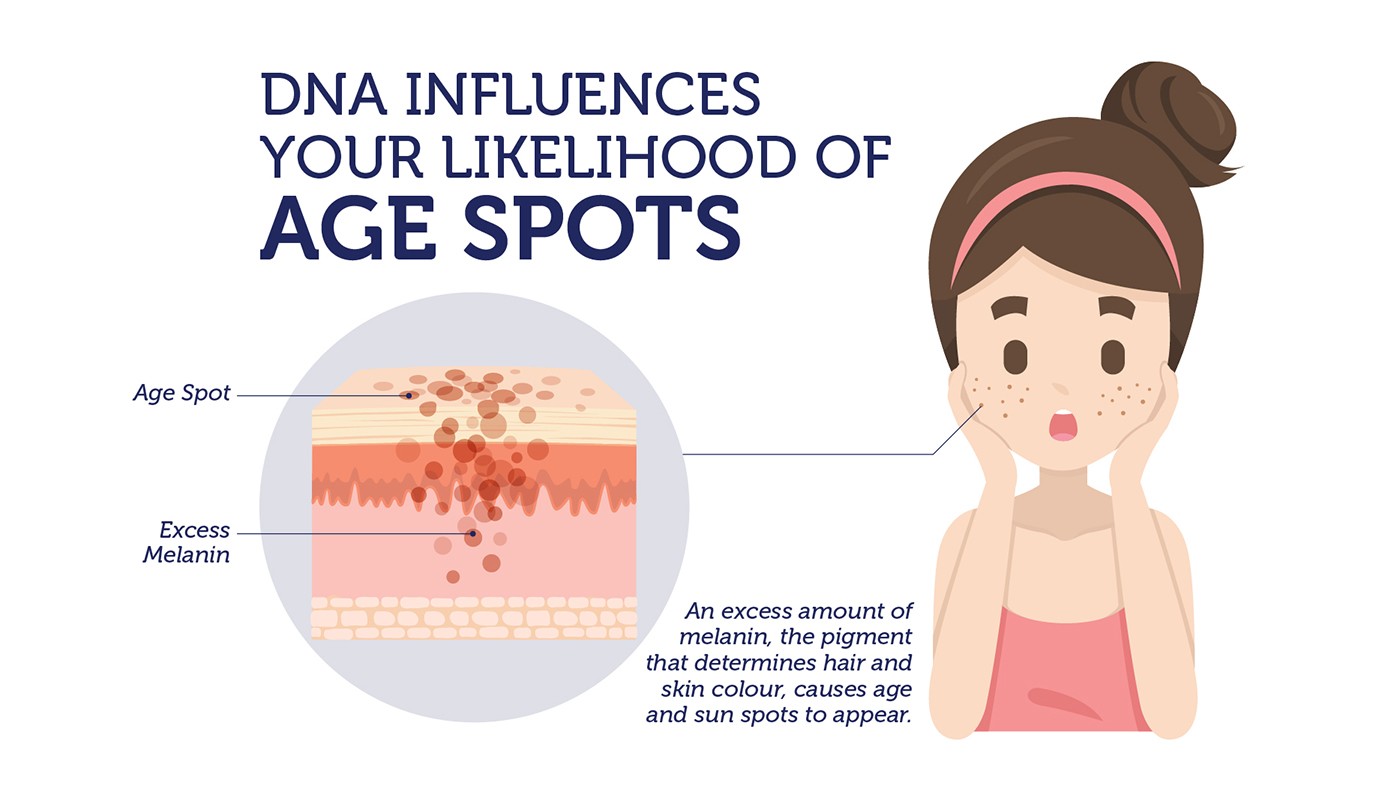“Mommy, how old is this oak tree?” That’s a simple question with a sophisticated, yet easy answer. You explain the idea of tree rings to your son, how every year a tree adds a new layer of cells to make growth rings that you can count to determine the age of a tree.
In comparison, “how old is that person?” is a much more difficult question to answer. Of course there are visible signs of aging, like age spots. But unlike tree rings, guessing someone’s age based on the number of age spots is not an exact science.
The appearance of these blemishes is influenced by different external factors, like ultraviolet (UV) light, as well as changes we carry in our DNA.
What are age spots?
Age spots, liver spots and solar lentigines, all refer to the blemishes that appear on our skin as we age. These brown, red, or sometimes nearly black spots are quite common in the areas of our body that are often exposed to the sun like the face, arms and legs.
The overproduction and accumulation of two pigments found in our skin, melanin and lipofuscin, are responsible for age spots. Melanin is the pigment that gives color to our skin, hair and eyes. Lipofuscin is often considered to be an age pigment, because its levels increase with age.
Melanin and lipofuscin darken our skin
According to one theory, age spots form when skin cells can’t properly dispose of lipofuscin. This affects the function of neighboring skin cells, causing them to age. As these cells die, they release extra lipofuscin, generating darker spots on your skin.
Alternatively, age spots mark sites of extra melanocytes, cells responsible for producing melanin. These cells make extra melanin, because they are damaged by the sun. This explains why age spots are found in areas of the skin that are more likely to be exposed to the sun.
Not just sun exposure
Your likelihood of developing age spots is not dependent on just sun exposure. Your genes also come into play, particularly genetic variants of MC1R, IRF4 and RALY.
The MC1R gene encodes for the melanocortin 1 receptor, which helps to regulate the production of melanin. Genetic variants, or altered versions of this gene, reduce the levels of the melanocortin 1 receptor, increasing the risk for developing severe age spots.
The IRF4 gene produces a protein that controls many genes in the melanocytes, including genes involved in melanin synthesis. One version of IRF4 affects the levels of this protein, and as a result influences skin pigmentation.
The RALY gene doesn’t appear to have a direct connection to skin color. But it’s located near another gene, which affects skin color (ASIP). The rs6059655 variant in the RALY/ASIP region is another genetic change linked to the appearance of age spots.
Are you more likely to form age spots?
For the most part, these blemishes are harmless. However, they can be a cosmetic nuisance, especially when they form on the face.
You can find out if you are at increased risk of age spots with the DNA Skin Health Test. However, even if you decide to embrace your heritage and declare that age spots are a sign of maturity, still remember to minimize sun exposure as much as possible to avoid other health complications.















